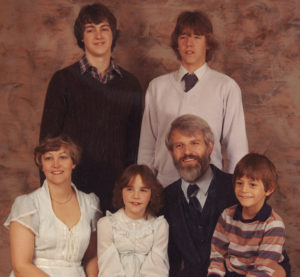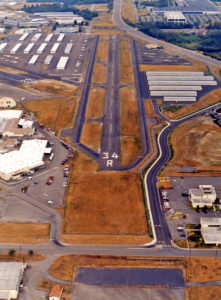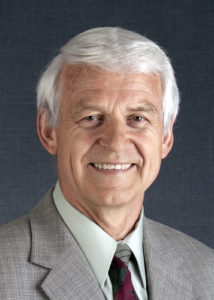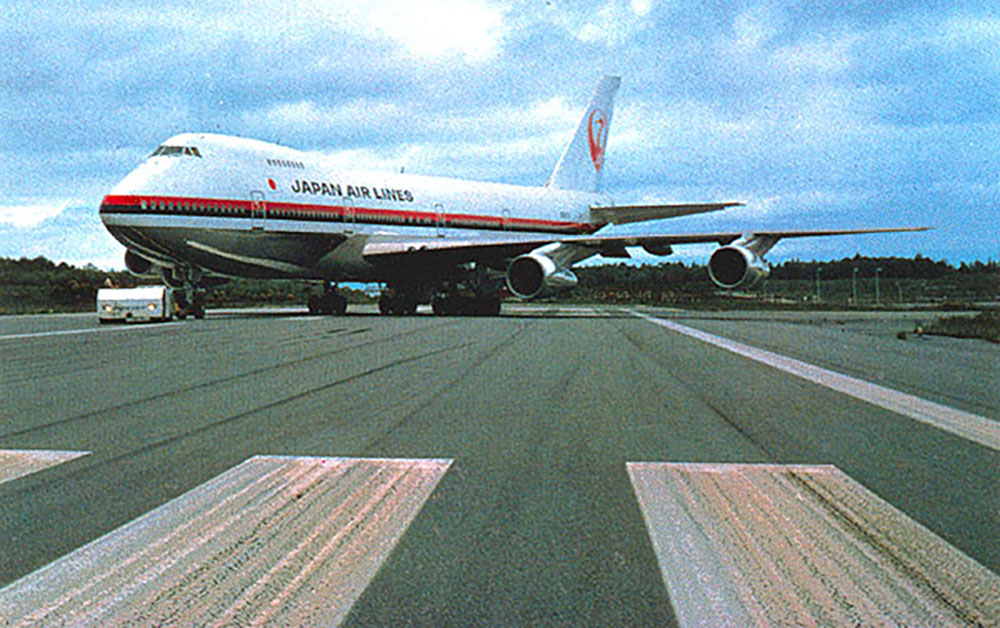Reid Middleton began its aviation engineering practice in the early 1970s under the direction of Paul Vick. Early on, the half-dozen person staff focused mainly on master planning and included work at the Port of Bremerton and Paine Field. Our expertise has evolved with the needs of the ever-changing aviation industry, and we continue to work with Ports and cities to address regulatory and funding challenges and to keep airports across the Northwest operating safely and efficiently. With the complexity of today’s competitive environment, it’s hard to imagine what it will be like in the future!
And now, a look back at one distinguished career from Reid Middleton’s Airport Group.
The business of consulting engineering was very different in 1966, when I began my engineering career, than it is today. We did not have a marketing department and did not need to compete for work. If the city of Edmonds wanted to do a street or sewer project, they came to Reid Middleton. Similarly, if the city of Mountlake Terrace or the Olympic View Water and Sewer District had a project, they came to Reid Middleton.
Nearly an Entire Career at One Company

The desirable culture, the variety of work, and the ability to grow, succeed, and advance have kept me at Reid Middleton for 46 years. There is great emphasis on the welfare of the employees and their families, and work is balanced with family activities. There is also an atmosphere of encouragement that provides motivation to strive for greater accomplishments. We help and support each other for mutual success and the success of the company as a whole. Over the years, I’ve formed close relationships with fellow employees that I value greatly.
My career path at Reid Middleton presented opportunities and challenges that were interesting and satisfying. My project experience varied from utilities and streets, to roadway and waterfront design and finally to airport engineering. My role also changed over the years, with increasing responsibility, from design engineer, to project engineer, to project manager and principal. I also had the opportunity to be involved in Reid Middleton corporate activities as a board member and, in later years, as Executive Vice President.
Strong encouragement from my superiors played a significant role in my success at Reid Middleton. Having graduated in forestry engineering, I did not have all of the classes that the civil engineering program included so I had not pursued registration as much as I should have. With encouragement from Tom Nack, a former president/CEO, I took some classes at Shoreline Community College (SCC), took a refresher course at the University of Washington (UW), and with many hours of serious study, I was able to pass the PE exam and become a licensed engineer. A fellow employee even made a surprise visit during the PE exam lunch break, lending encouragement for the afternoon portion of the exam.
Satisfying Work

Work at Paine Field in Everett, Wash., is probably some of my more memorable airport experience. Some notable projects there include:
- Rehabilitation of the main runway was interesting with Boeing expecting that somehow that project could be done without shutting down the runway so their flight and delivery schedule would not be impacted. I’m happy to report that we met Boeing’s expectation!
- The rehabilitation of a section of World War II concrete pavement that was badly cracked resulted in several awards for Paine Field and Reid Middleton. It appeared repair would require removal of the entire existing pavement and base, including considerable unsuitable soil below that. Instead, we rubblized the existing concrete, turning it to base, and added 10 inches of asphalt surfacing. This reduced the cost and time to construct, considerably reducing the impact to Boeing and other airport users for flights.
- Perhaps the most complex project at Paine Field was the Runway 34 Safety Area Improvements where we extended the Runway 34 Safety Area through a wetland. We used waterfront technology to hold back wetland soils.
Adventures in Engineering
One of my most interesting and beneficial experiences early on was contacting property owners to acquire sewer easements and street slope rights for property we wanted to cross with a sanitary sewer or to slope the property to match a new proposed road grade. Talk about cold calls and having to describe a very unpopular subject to a less than receptive audience. I found most people were reasonable and not too difficult to deal with. However, some were challenging, and for those, I worked with the city attorney to negotiate acceptable terms for easements and slope rights. A few cases actually went to condemnation, and I gave court testimony to support those proceedings.
Conducting a piling investigation with Reid Middleton colleague Randy Hall in Coupeville, Wash., provided me with another character-building experience. It was a windy day, and there were some fairly large waves. To make matters worse, the boat we were given resembled a plastic soap dish and wasn’t very stable. Our little boat acted like the ball in a pinball machine, slamming from piling to piling. It was extremely difficult to maneuver the boat from piling to piling and to hold it in place long enough to tap on and drill holes into the piling to assess their condition. The whole thing was pretty humorous and, after a while, Randy and I were laughing so hard we could hardly do our work. Ah, those were the days!
My early airport work included airport planning with master plans at the Elma and Kelso airports and site selection work at Port Townsend. These projects involved some interesting flights with Paul Vick, the head of the airport group at that time. There was a particularly memorable flight into Elma. Elma had a road with a power line at the north end of the runway and a swamp at the south end. It was a grass strip and short. Other than that, it was great. To land at Elma, you had to drop down to the runway immediately after crossing the power lines to make sure you could stop before reaching the swamp. Paul made his approach, but didn’t drop soon enough after the power lines to ensure that he could stop before reaching the swamp, so he decided to go around and try again. He pushed in the throttle, and I remember hearing the plane engine misfire as we crossed low across the pond. I said something like, “We really don’t need to land here today,” but Paul went around one more time, and we landed without incident. The flight at Port Townsend was similar. We were flying low and slow, my favorite type of flying, so we could see the proposed airport sites better. I remember the stall buzzer going off during much of that flight.
Looking Forward

Nationally recognized airport consultant Greg Isbill, one of my mentors in my early engineering days, gave me two pieces of advice that hold true today: “If you did something wrong, accept the responsibility and fix it,” and, “Don’t get hung up on the details.” The trick is to know which details are important and need more effort and to know when you have done enough.
Client-focused design and communication have always been necessary ingredients for success in the engineering consultant industry, and I believe they will continue to be in the future. I’m grateful to have spent my career at a company where understanding, supporting, and going the extra mile for clients is valued so greatly.


